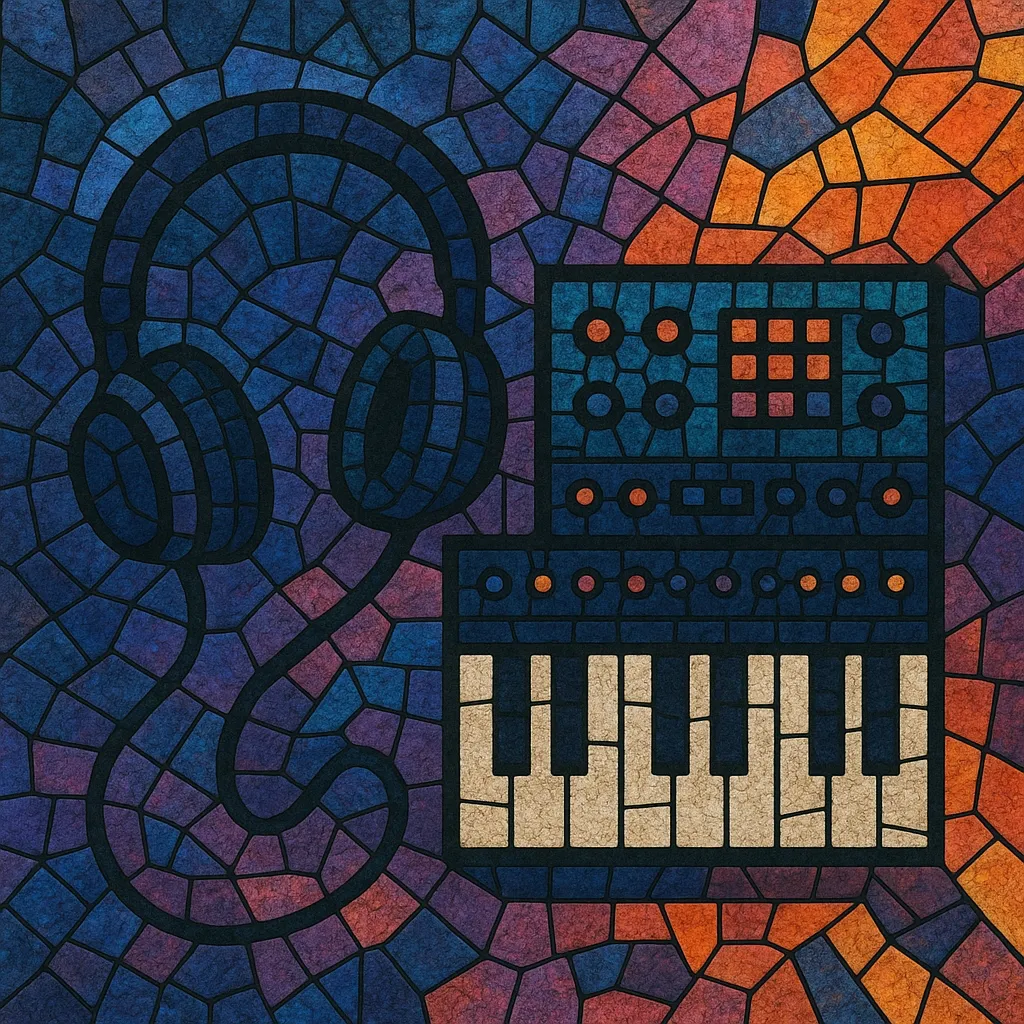Electropop is a branch of pop music that foregrounds electronic instruments—especially synthesizers, drum machines, and sequencers—to deliver catchy, hook-driven songs. It preserves the verse–pre-chorus–chorus architecture and melodic immediacy of pop while replacing most traditional band instrumentation with programmed rhythms, synthetic bass lines, and glossy textures.
The style emphasizes earworm toplines, precise rhythmic grids, and tightly produced arrangements that often highlight contrast between minimal, punchy verses and expansive, anthemic choruses. Timbres range from warm analog pads and arpeggiators reminiscent of the late 1970s/early 1980s to ultra-modern, hyper-detailed sound design, making electropop both retro-leaning and future-facing depending on the artist.
Electropop coalesced as affordable synthesizers (Moog, ARP) and drum machines (Roland CR series) reached musicians outside academic studios. Influenced by the mechanized grooves of krautrock and the sleek pulse of disco, UK and European artists applied electronic instrumentation to pop songcraft, favoring concise hooks over lengthy experimentation. Gary Numan and The Human League exemplified the pivot from rock rhythm sections to synth-led arrangements, setting the template.
The genre surged alongside New Wave, with acts such as Depeche Mode, Eurythmics, and Pet Shop Boys taking synthesizer-driven singles into global charts. The era standardized key electropop traits: drum-machine backbones, synth-bass riffs, bright polyphonic pads, and highly memorable choruses. MTV-era visual aesthetics—futurist, fashion-forward—reinforced the music's sleek, modern identity.
While grunge, hip hop, and dance genres dominated, electropop’s DNA persisted in European pop and Japanese productions. The decade saw refinement of digital synthesis and sampling, enabling smoother, more polished textures. Elements of house, Eurodance, and techno occasionally fed back into electropop songwriting, even as the term was used less prominently in Anglophone markets.
A resurgence brought electronic textures back to the pop forefront. Electroclash reintroduced 1980s tones with a punky edge, while artists like Goldfrapp, Robyn, and La Roux crafted chart-ready electropop with crisp drum programming and neon synth hooks. Improved DAWs and soft synths democratized production, making the aesthetic accessible to independent artists.
Electropop became a core grammar of mainstream pop. CHVRCHES, Grimes, and Charli XCX blended emotive songwriting with sharp, synthetic palettes. K-pop and J-pop incorporated electropop frameworks at scale, pairing precision-engineered sound design with choreographed performance and high-concept visuals. Simultaneously, indie scenes explored nostalgic 1980s textures and minimal synth tendencies.
The genre continues to hybridize: hyperpop amplifies electropop’s maximalist sheen; synthwave and chillwave reference its 1980s heart; and boutique hardware (analog reissues, modular) coexists with cutting-edge software. Electropop remains a flexible platform for both retro romanticism and futuristic experimentation.
Use synthesizers (virtual analog, FM, and wavetable) for basses, pads, and leads; pair them with drum machines or tight sample kits. Favor clean, punchy sound design with clear separation: a solid synth-bass, a bright hook lead, and supportive pads/arp layers.
Write strong toplines with memorable motifs and clear contour. Common progressions are diatonic and concise (e.g., I–V–vi–IV or ii–V–I variants), with occasional modal color (Mixolydian or Dorian). Keep verses sparse, then open harmonies in the chorus for impact.
Stick to 4/4 with a steady grid. Typical tempos range from 90–130 BPM; 105–125 BPM is a sweet spot for danceable but pop-friendly grooves. Use syncopated hi-hats, claps on beats 2/4, and sidechained pads/bass to create forward motion.
Standard structure: intro – verse – pre-chorus – chorus – verse – pre – chorus – bridge – final chorus/outro. Create contrast by thinning textures in verses, introducing pre-chorus lift (rising pad/arp), and maximizing chorus density (stacked vocals, doubled leads, extra percussion).
Deliver clear, emotive vocals—often intimate in verses and bolder in choruses. Lyrics lean toward personal relationships, modern life, and introspection, occasionally with futurist or urban imagery. Use doubles, harmonies, and selective vocoder/tuning for color.
Layer complementary synths (e.g., a warm pad + plucky arp + monophonic lead). Employ sidechain compression for pulse, tasteful saturation for presence, and selective reverb/delay to keep mixes spacious yet focused. Automate filter cutoff, envelope depth, and effects to add motion.
Soft synths (Serum, Diva, Sylenth1), drum machines (TR-series kits), and arpeggiators/sequencers are staples. Reference both classic 1980s mixes and modern electropop for balance between nostalgia and contemporary loudness, clarity, and stereo imaging.


